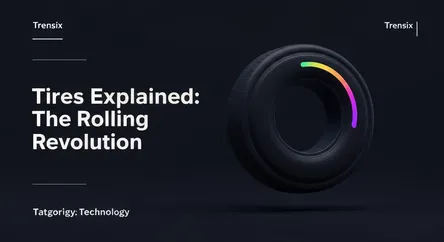Technology
Tires Explained: The Rolling Revolution

Discover the high-tech engineering behind car tires. Learn how advancements in materials and design are boosting safety, efficiency, and performance.
What is it?
A tire is far more than just a rubber ring; it's a highly engineered component critical to a vehicle's performance and safety. Comprised of synthetic rubber, natural rubber, carbon black, and other chemical compounds, it's designed to provide grip, support the vehicle's weight, absorb road shocks, and transmit traction and braking forces to the road surface. Modern tires are complex structures with multiple layers, including the tread for grip, the sidewall for stability, and the bead which secures it to the wheel. The design of the tread pattern is crucial for channeling away water and maintaining contact with the road.
Why is it trending?
Tire technology is rapidly evolving, primarily driven by the rise of Electric Vehicles (EVs). EVs are heavier and deliver instant torque, requiring stronger tires that wear evenly and operate quietly to complement silent electric motors. This has spurred innovation in new rubber compounds and tread designs. Furthermore, there is a major push towards sustainability, with manufacturers exploring eco-friendly materials like dandelion rubber and recycled plastics. The concept of "smart tires" with embedded sensors that provide real-time data on pressure, temperature, and wear is also gaining significant traction.
How does it affect people?
The right tires directly impact driver safety, vehicle efficiency, and comfort. Advanced tire technology leads to shorter braking distances, better handling in adverse weather conditions like rain and snow, and a reduced risk of hydroplaning. For consumers, choosing the correct tire can significantly improve fuel economy or an EV's range due to lower rolling resistance. Ultimately, innovations in tires provide a safer, more economical, and more comfortable driving experience for everyone on the road.